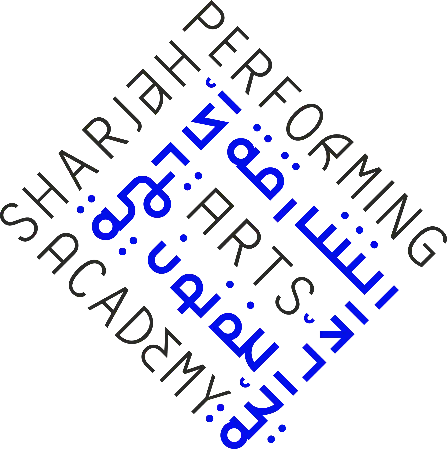Teaching online : a practical guide /
Ko, Susan Schor,
Teaching online : a practical guide / Susan Ko and Steve Rossen. - Fourth edition. - 1 online resource (xxiii, 486 pages)
6 Building an Online Classroom.
P.B
Includes bibliographical references and index.
Cover ; Half Title ; Title Page ; Copyright Page ; Brief Contents; Table of Contents; Preface; Part I Getting Started; 1 Teaching Online: An Overview; The Range of Online Experiences: Two Hypothetical Cases; Western Philosophy, a Course Taught Entirely Online; Introduction to Physics, a "Blended" Course; Teaching Online: The Basics; Teaching a Course Entirely Online; What about Support Personnel and Training?; Do You Have to Be a Computer Expert?; What Can Teaching Online Do for You?; Heightened Awareness of Your Teaching; New Connections with the Wider World. A Blended Course in Italian Language and CultureA Blended Mechanical Engineering Course; Initial Steps in Course Design and Development; Analysis; Course Goals and Learning Objectives/Outcomes; Design; Rubrics and Guidelines for Online Course Design; Other Design Considerations; Universal Design and Accessibility; Adult Learners; Scaffolding; Low-Stakes Assignments; Course Development; Some Help in Getting Organized; Instructor-Generated Content and Presentation: Lectures and Commentary; Text; PowerPoint Slide Shows; Narrated Slides, Audio or Videotaping, and Screencasting. Advice for Instructional Designers on Working with InstructorsAdvice for Instructors Working within a Team Approach; How to Best Approach a Course You Did Not Develop but Are Asked to Teach; Suggestions for Approaching the Teaching of a Highly Standardized Course; Competency-Based Education and Adaptive Learning Modules; 5 Creating an Effective Online Syllabus; The Contract; Class Participation and Grading Criteria; Managing Student Expectations; The Map; The Schedule; Using Specific Dates; Supplying Information More than Once; Sample Syllabi: Online and Blended Course Versions. Instructor Presentation: Simulations and ExperimentsUsing External Content; Discussion/Interaction/Communications; Group-Oriented Work and Student Presentation; Research; Assessment Considerations; High-Stakes, Low-Stakes Testing; Low-Stakes Testing; High-Stakes Testing; Assuring Academic Integrity among Your Students; Choosing Textbooks, Coursepacks, and Software for Your Course; Redesign; Redesign from Longer to Shorter; Redesign from Shorter to Longer; Some Final Tips on Course Development; 4 Working with Others to Develop a Course; A Model of Instructor-Designer Collaboration. Your Students Need You More than Ever2 Scouting the Territory: Exploring Your Institution's Resources; Questions to Ask about Your Institution's Resources; What's Already in Place?; What Kind of Software Is Available at Your Institution to Run Online Courses?; What Is the Profile of Student Users?; What Kind of Technical Support Does Your Institution Provide?; What Kind of Instructor Training and Support Is Available?; Part II Putting the Course Togeth; 3 Course Design and Development; Some Examples of Course Design and Development; A Speech Course Taught Entirely Online.
0203427351 1135055572 1135055580 9780203427354 9781135055578 9781135055585
College teaching--Aids and devices.
Computer-assisted instruction.
Distance education.
Education, Higher--Computer-assisted instruction.
Internet in education.
Internet in higher education.
World Wide Web--Study and teaching (Higher)
College teaching--Aids and devices.
Computer-assisted instruction.
Distance education.
Education, Higher--Computer-assisted instruction.
Internet in education.
Internet in higher education.
Education, Distance.
Electronic books.
LB2395.7 / .K67 2017
371.3344678 378.17344678
Teaching online : a practical guide / Susan Ko and Steve Rossen. - Fourth edition. - 1 online resource (xxiii, 486 pages)
6 Building an Online Classroom.
P.B
Includes bibliographical references and index.
Cover ; Half Title ; Title Page ; Copyright Page ; Brief Contents; Table of Contents; Preface; Part I Getting Started; 1 Teaching Online: An Overview; The Range of Online Experiences: Two Hypothetical Cases; Western Philosophy, a Course Taught Entirely Online; Introduction to Physics, a "Blended" Course; Teaching Online: The Basics; Teaching a Course Entirely Online; What about Support Personnel and Training?; Do You Have to Be a Computer Expert?; What Can Teaching Online Do for You?; Heightened Awareness of Your Teaching; New Connections with the Wider World. A Blended Course in Italian Language and CultureA Blended Mechanical Engineering Course; Initial Steps in Course Design and Development; Analysis; Course Goals and Learning Objectives/Outcomes; Design; Rubrics and Guidelines for Online Course Design; Other Design Considerations; Universal Design and Accessibility; Adult Learners; Scaffolding; Low-Stakes Assignments; Course Development; Some Help in Getting Organized; Instructor-Generated Content and Presentation: Lectures and Commentary; Text; PowerPoint Slide Shows; Narrated Slides, Audio or Videotaping, and Screencasting. Advice for Instructional Designers on Working with InstructorsAdvice for Instructors Working within a Team Approach; How to Best Approach a Course You Did Not Develop but Are Asked to Teach; Suggestions for Approaching the Teaching of a Highly Standardized Course; Competency-Based Education and Adaptive Learning Modules; 5 Creating an Effective Online Syllabus; The Contract; Class Participation and Grading Criteria; Managing Student Expectations; The Map; The Schedule; Using Specific Dates; Supplying Information More than Once; Sample Syllabi: Online and Blended Course Versions. Instructor Presentation: Simulations and ExperimentsUsing External Content; Discussion/Interaction/Communications; Group-Oriented Work and Student Presentation; Research; Assessment Considerations; High-Stakes, Low-Stakes Testing; Low-Stakes Testing; High-Stakes Testing; Assuring Academic Integrity among Your Students; Choosing Textbooks, Coursepacks, and Software for Your Course; Redesign; Redesign from Longer to Shorter; Redesign from Shorter to Longer; Some Final Tips on Course Development; 4 Working with Others to Develop a Course; A Model of Instructor-Designer Collaboration. Your Students Need You More than Ever2 Scouting the Territory: Exploring Your Institution's Resources; Questions to Ask about Your Institution's Resources; What's Already in Place?; What Kind of Software Is Available at Your Institution to Run Online Courses?; What Is the Profile of Student Users?; What Kind of Technical Support Does Your Institution Provide?; What Kind of Instructor Training and Support Is Available?; Part II Putting the Course Togeth; 3 Course Design and Development; Some Examples of Course Design and Development; A Speech Course Taught Entirely Online.
0203427351 1135055572 1135055580 9780203427354 9781135055578 9781135055585
College teaching--Aids and devices.
Computer-assisted instruction.
Distance education.
Education, Higher--Computer-assisted instruction.
Internet in education.
Internet in higher education.
World Wide Web--Study and teaching (Higher)
College teaching--Aids and devices.
Computer-assisted instruction.
Distance education.
Education, Higher--Computer-assisted instruction.
Internet in education.
Internet in higher education.
Education, Distance.
Electronic books.
LB2395.7 / .K67 2017
371.3344678 378.17344678
